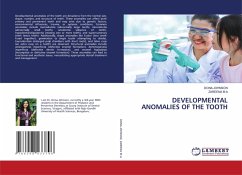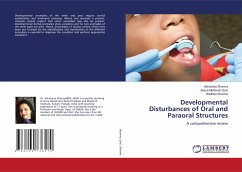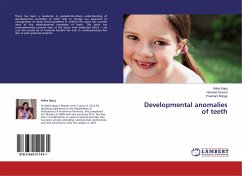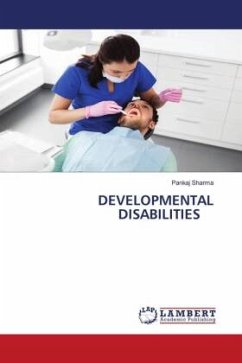
DEVELOPMENTAL ANOMALIES OF THE TOOTH
Versandkostenfrei!
Versandfertig in 6-10 Tagen
40,99 €
inkl. MwSt.

PAYBACK Punkte
20 °P sammeln!
Developmental anomalies of the teeth are deviations from the normal size, shape, number, and structure of teeth. These anomalies can affect both primary and permanent teeth and may arise due to genetic factors, environmental influences, trauma, or systemic conditions. Common anomalies include macrodontia (abnormally large teeth), microdontia (abnormally small teeth), anodontia (absence of teeth), hypodontia/oligodontia (missing one or more teeth), and supernumerary teeth (extra teeth). Additionally, shape anomalies like fusion (two teeth fused together), gemination (a single tooth attempting t...
Developmental anomalies of the teeth are deviations from the normal size, shape, number, and structure of teeth. These anomalies can affect both primary and permanent teeth and may arise due to genetic factors, environmental influences, trauma, or systemic conditions. Common anomalies include macrodontia (abnormally large teeth), microdontia (abnormally small teeth), anodontia (absence of teeth), hypodontia/oligodontia (missing one or more teeth), and supernumerary teeth (extra teeth). Additionally, shape anomalies like fusion (two teeth fused together), gemination (a single tooth attempting to divide), taurodontism (enlarged pulp chambers with short roots), and talon cusp (an extra cusp on a tooth) are observed. Structural anomalies include amelogenesis imperfecta (defective enamel formation), dentinogenesis imperfecta (defective dentin formation), and enamel hypoplasia (incomplete or defective enamel formation). These anomalies can lead to functional and aesthetic issues, necessitating appropriate dental treatment and management.














